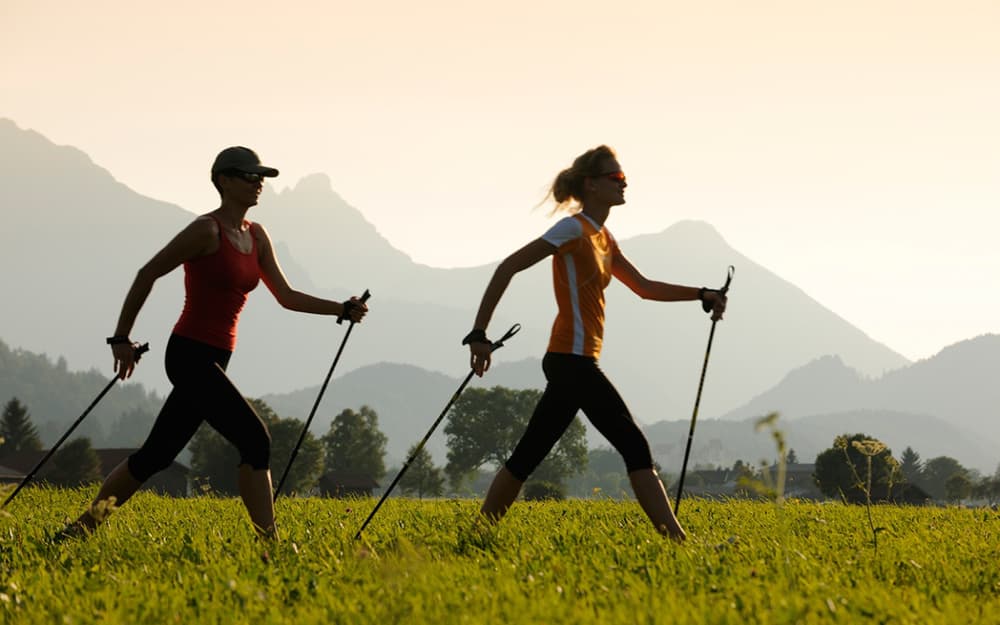Nordic Walking is quickly emerging as the go-to fitness trend for older adults—offering a safe, joint-friendly way to burn calories, boost balance, and stay socially and physically active. Here’s why seniors everywhere are picking up poles and walking toward better health.

In the world of fitness trends, certain trends blaze brightly and vanish—and others took us by surprise and went global. Nordic Walking is one of those trends, and it's changing the face of healthy aging.
Developed in the 1930s by Finnish cross-country skiers as a summer training program, Nordic Walking utilizes specially developed poles to turn a normal walk into an exercise of the entire body.
The same as low-impact exercise, it's gentle on the joints, adjustable at any level, and certainly healthy—during your 80s and beyond.
Stay updated with the latest breakthroughs, wellness tips, and fitness trends on our Health News section.
Let's dive into the specifics of why Nordic Walking is the new column of active aging, and why it's pulling a new generation of health-conscious walkers worldwide.
What's So Special About Nordic Walking?
Nordic Walking may look like hiking with poles, but the mechanics go far deeper. By using poles with each step, you’re engaging muscles in the upper body, core, and legs simultaneously—effectively creating a low-impact, high-results workout.
Each of the pole plants provides support and propulsion and invites the natural standing posture. The exercise involves more than 90% of the body muscles, a greater percentage than normal walking or even running, which utilizes the lower half.
Nordic Walking is also different from much of exercise for older adults with only movement or resistance training, as it attacks cardiovascular conditioning, strengthening, posture, and balance all at once in a single workout only.
Active Aging Benefits
The medical advantage of Nordic Walking makes it very applicable to the elderly, people with chronic joint aches, or rehab patients following injury. It is due to this that it accommodates the body that is aging:
1. Joint-Friendly Movement: By shifting weight to poles and legs, stress is transferred from knees, hips, and lower back—a precious one for arthritis-free or aging joints.
2. Enhanced Balance & Stability: The poles provide two extra points of contact with the earth, minimizing the likelihood of falling—one of the most frequent and lethal occurrences among the elderly.
3. Cardio Training Effortlessly: Low-impact as it is, Nordic Walking does raise heart rate a great deal. It's also been discovered to expend as much as 46% more calories than regular walking at an equal level of effort.
4. Muscle Strength & Support: With each step, you're working your back, shoulder, and core posture-support muscles to keep the spine straight and curvature-free, and develop coordination.
5. Cognitive Acuity & Social Bonding: Nature walking pathway exposure increases mood, mental capacity, and clarity. And walking clubs offer social affiliation, sense of purpose, and motivation.
Evidence-Based
A 2023 article in The Journal of Physical Activity and Aging tracked 100 older adults Nordic Walking three times a week. The outcome:
80% demonstrated enhanced balance and stability of gait
72% improved VO2 max (marker for cardiovascular and lung capacity)
Subjects slept better, were less stressed, and joint pain
Geriatric medical physician Dr. Nina Kapoor has the following:
"Nordic Walking is ideal for older people. It's a mix of challenge and safety—sufficient challenge to offer cardiovascular conditioning, yet safe enough to be tolerated over the long term."
Getting Started: What You'll Need
No gym membership, no clubs—open space, good posture, and some equipment, and you're all set. Here's what you'll require:
Nordic Walking Poles
Don’t use regular hiking poles. Nordic Walking poles are lighter, ergonomic, and often come with rubber tips for urban use and metal spikes for trails.
Proper Footwear
Comfortable walking shoes with good heel cushioning and arch support are ideal. Think trail shoes or athletic walking sneakers.
Clothing for Mobility
Breathable, layered clothing works best—especially if you’re walking in changing weather conditions.
4. Learn the Technique :
Learning method before going out on the trails:
Opposite arm and opposite leg at the same time (natural walk)
Poles behind you pushing you forward
Arms swinging from the shoulder, not the elbow
Take a beginner course, learn online at tutorial websites, or find a local Nordic Walking club in your community to join.
Global Dissemination of Nordic Walking Communities
Whereas Nordic Walking was a snobbish pursuit in the past, now it is a global fitness fad. It has been added to Germany's national public health program. There are age parks in Australia and Canada with Nordic Walking trails and resting stops.
Senior citizens are being offered packages by health resorts in Kerala, Uttarakhand, and Tamil Nadu in India—with Ayurveda, yoga, and mindfulness added on as an extra feature as part of a complete rejuvenation package.
World Nordic Walking Federation (WNWF) organizes seven world meetups and championships with age categories up to the 70s and 80s.